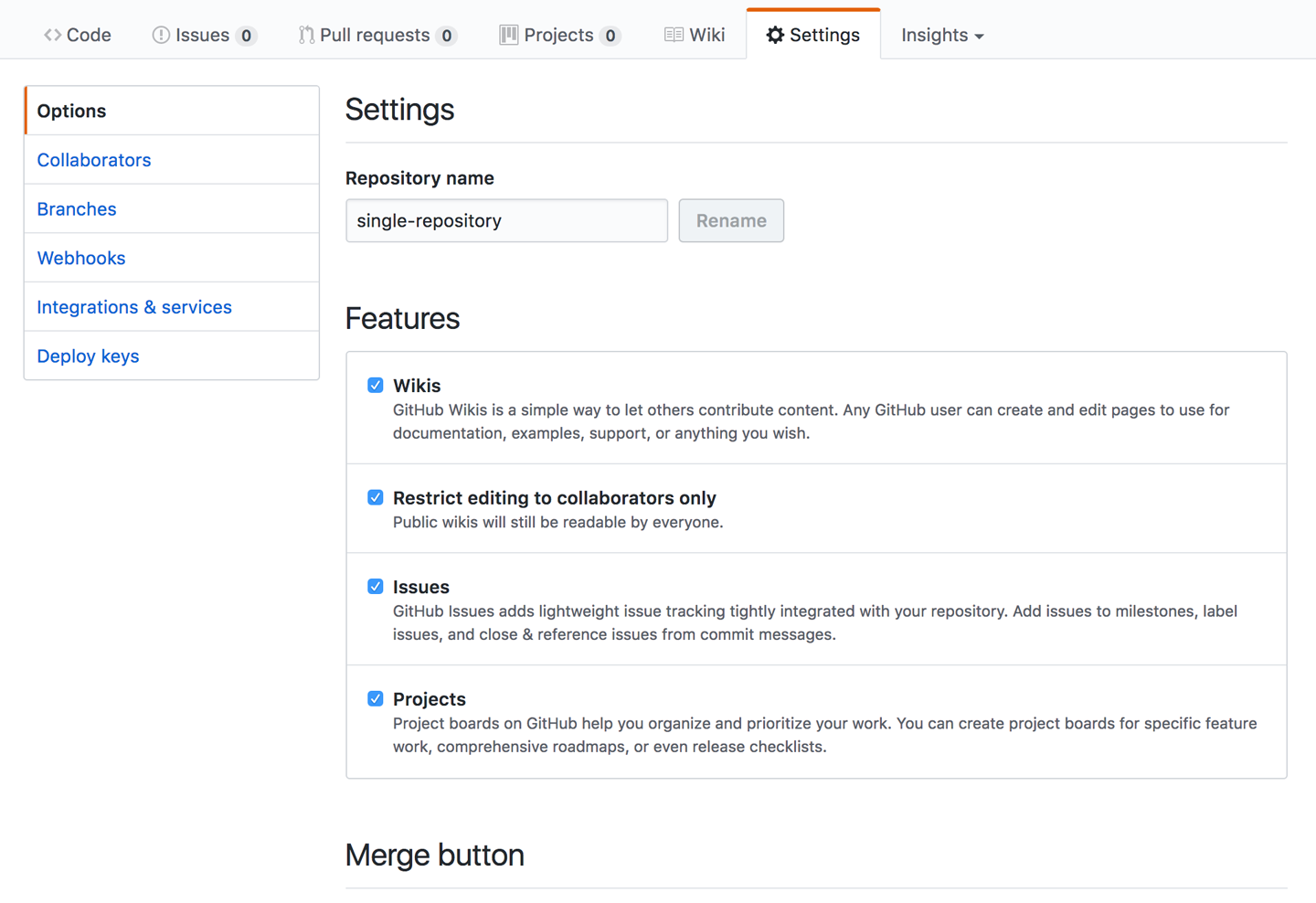Chapter 7. Configuring Repositories and Organizations
So far weâve looked at how to view, edit, and collaborate on repositories. In this chapter weâre going to take a step back and go through the process of configuring a GitHub repository for a new project.
Warning
If youâre working with developers on a contract basis, youâll want to create the repository they use to work on. Creating the repository means that youâll always have access to the code and the additional information contained in pull requests, issues, projects, and wikis. Once youâve created it, you can then add the developers as collaborators so theyâll have access to the repositoryâuntil you decide to revoke it. You do not want contract developers to create the repository for you. If they do, theyâll be able to remove you from the repository at any time.
Configuring a Repository
To configure a repository, start by clicking the Settings tab at the top of the page. By default youâll go to the Options menu within Settings, as shown in Figure 7-1, which allows you to configure some high-level settings.

Figure 7-1. The SettingsâOptions screen
The first available setting to change is the name of the repository. If you change the repo name in the text box, the Rename button will become active, allowing you to change the name of the project. Donât worry if your developers are already connected ...
Get Introducing GitHub, 2nd Edition now with the O’Reilly learning platform.
O’Reilly members experience books, live events, courses curated by job role, and more from O’Reilly and nearly 200 top publishers.

